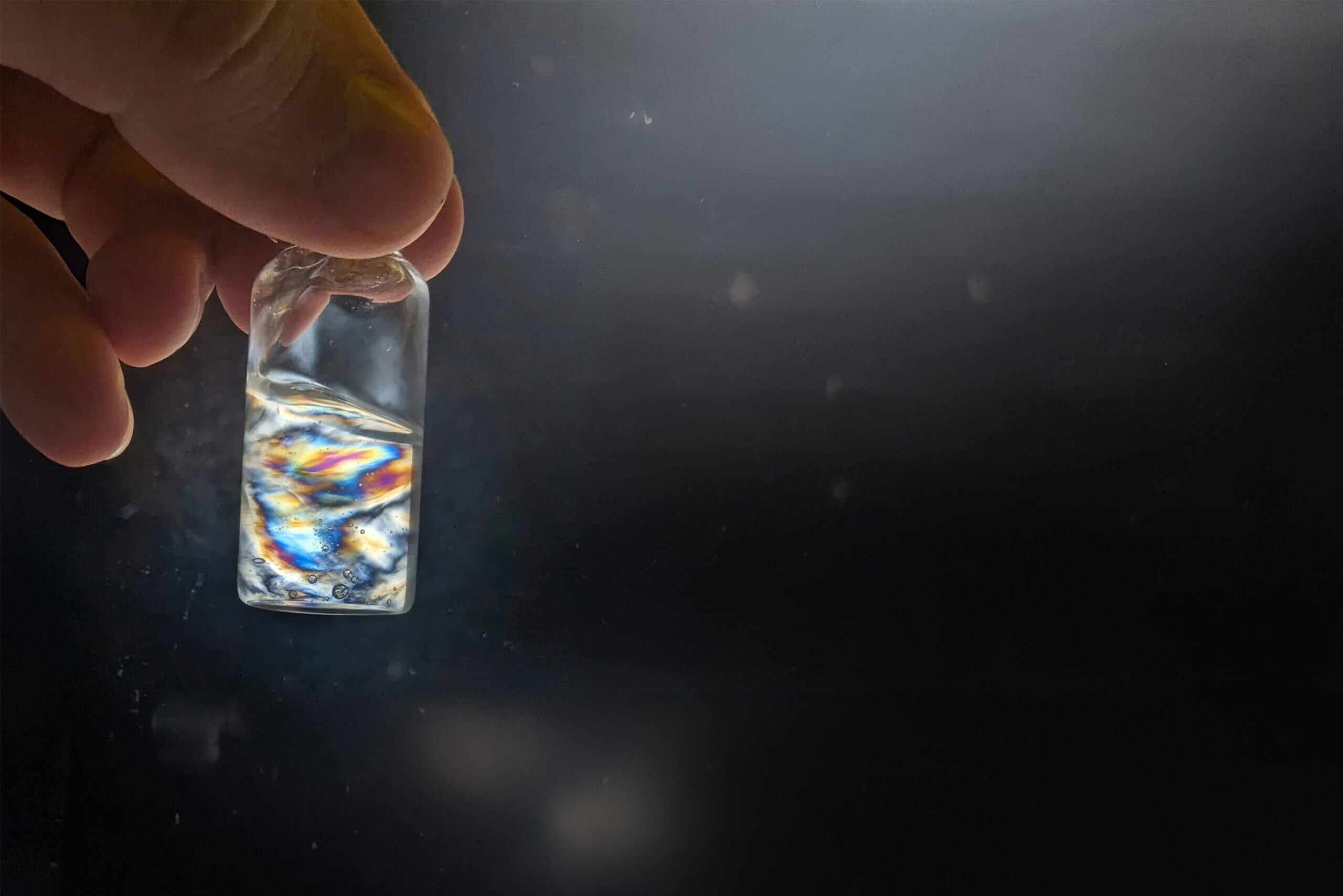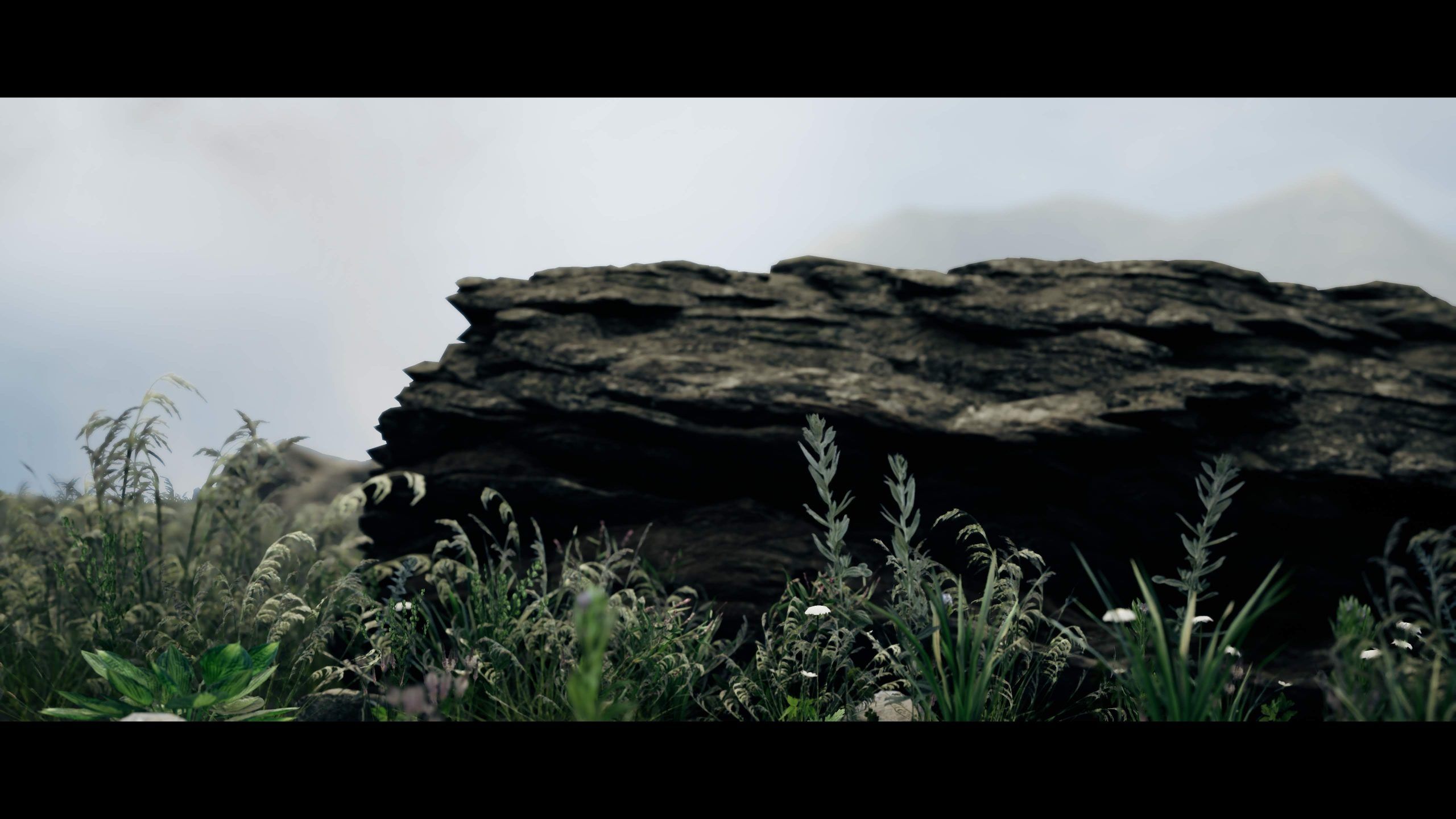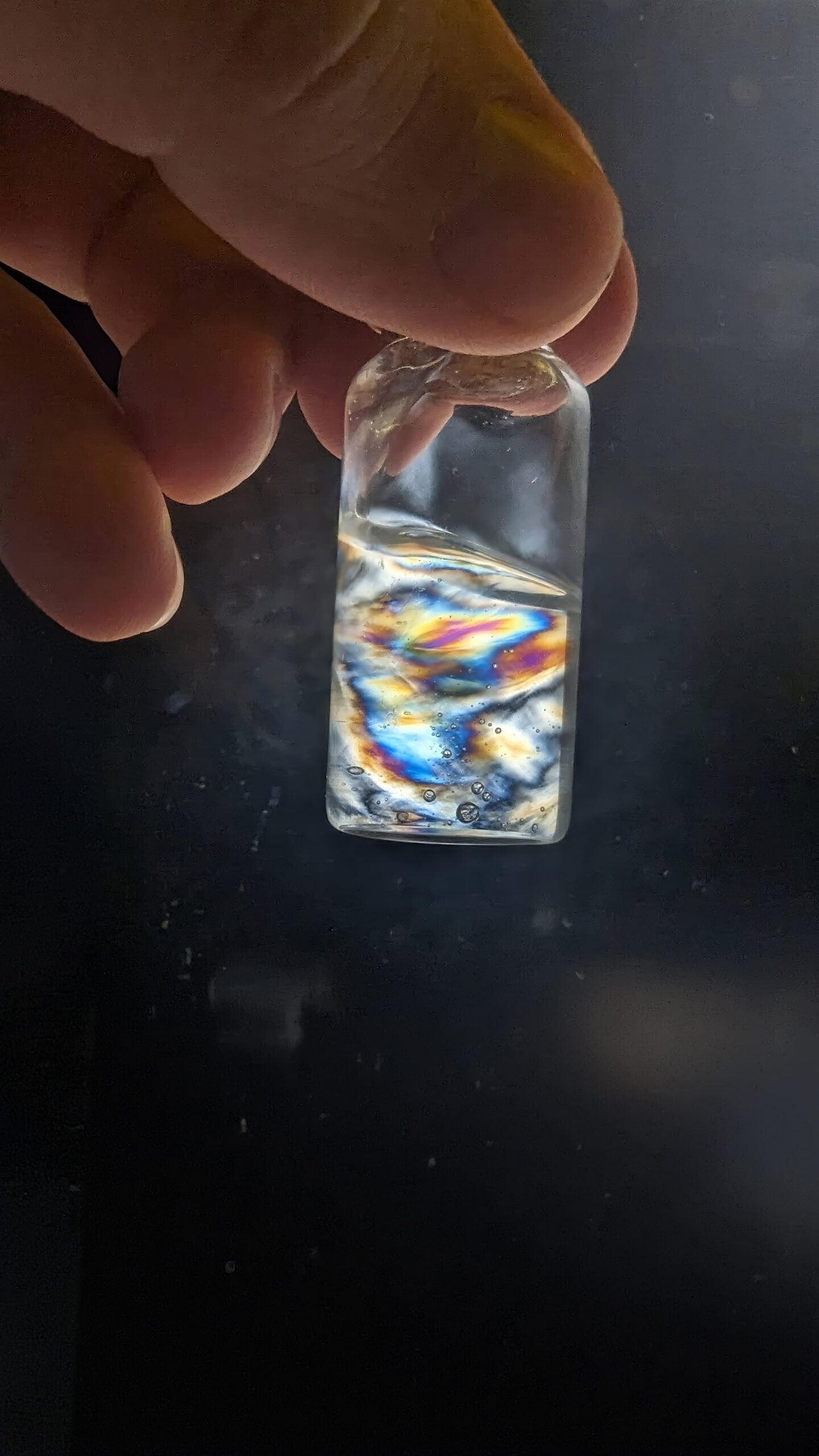
Spektraflux
- Physical state: liquid, viscous
- Colour: Varies depending on light and mechanical conditions (marble black and white at rest, iridescent shades when moving)
- Biodegradability: the components of the liquid are biodegradable, there is no acute risk to the environment from normal handling.
- Toxicity: Low, no known toxic effects from normal handling
Specraflux is an optically active liquid that exhibits unique dynamic properties when interacting with specific light conditions and mechanical motion. Its visual characteristic is that in its resting state it occupies a structure with a black and white marble pattern, while during mechanical motion, such as mixing or circulation, it changes its colour profile. This process involves smooth transitions between a wide range of colours, including yellow, green, blue, purple, red, orange.
This phenomenon is the result of complex optical and physicochemical interactions that involve the redistribution and orientation of particles in the liquid. Spectroflux exploits the ability to change its optical property in response to external influences, which is mediated primarily by its viscoelastic structure and specific arrangement of molecules. This effect can be compared to the properties of liquid crystals or optically active gels, which exhibit significant colour variations when external conditions change.
The mechanism of these colour variations lies in changes in the refractive index and refractive properties of the liquid, which depend on the orientation of the particles in solution. As the liquid moves, these particles are redistributed, which alters the optical path of the passing light and thus the perception of colour. The interference of light and its decay in the liquid are affected by particle dynamics and molecular interactions, resulting in an effect similar to dispersion or diffraction.
The colour effects are further enhanced by the strong viscosity, which allows for stabilisation of optical patterns and slower particle dynamics. This ensures both high reactivity to mechanical stimuli and the ability to maintain static optical patterns in a resting state.
These properties make Spectroflux a potential application in areas that require controllable optical phenomena, such as advanced imaging technologies, art installations or materials sensitive to environmental changes. This material offers new possibilities for manipulating the optical properties of liquids and extends the boundaries of traditionally understood optical materials.












